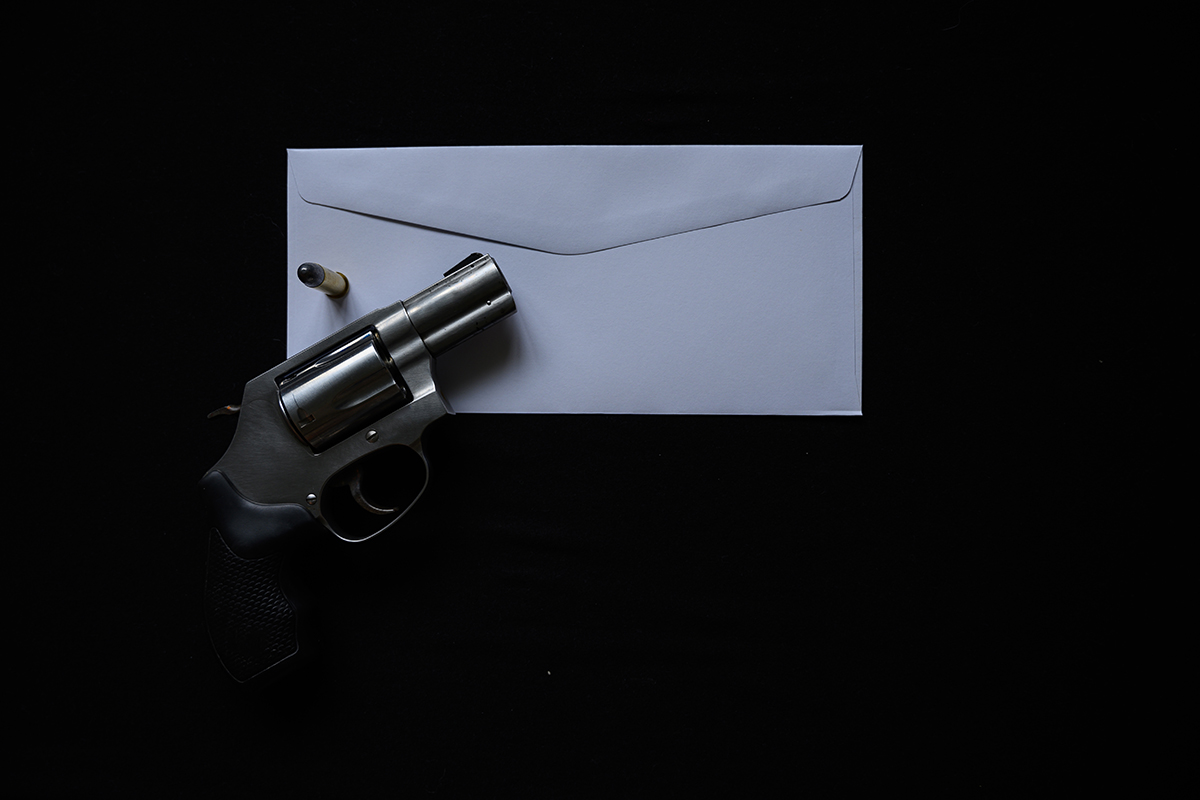A Formal Business Letter is a piece of correspondence that is sent from one company to another. It is also a letter written for commercial purposes, either to close a business deal, for a complaint from one organization or for other company matters.
It is important to note that there are two types of business letters; the first is the formal letter, while the other is the informal letter.
The formal letter follows a structured set of rules and guidelines to ensure the correspondence’s formal tone. Such a letter entails legal and formal correspondence related to sales requests, information requests, and other corporate affairs.
This effectively communicates an important aspect of a company’s affairs to another company seeking to partner with them. Therefore, this type of letter is usually of great importance to the relationship-building between companies.
On the other hand, the informal one takes a lighter approach; it does not follow strict rules like the formal letter. They are usually the letters sent within an organization from an employee to other employees or from an employee to the management and vice versa.
Letter Examples
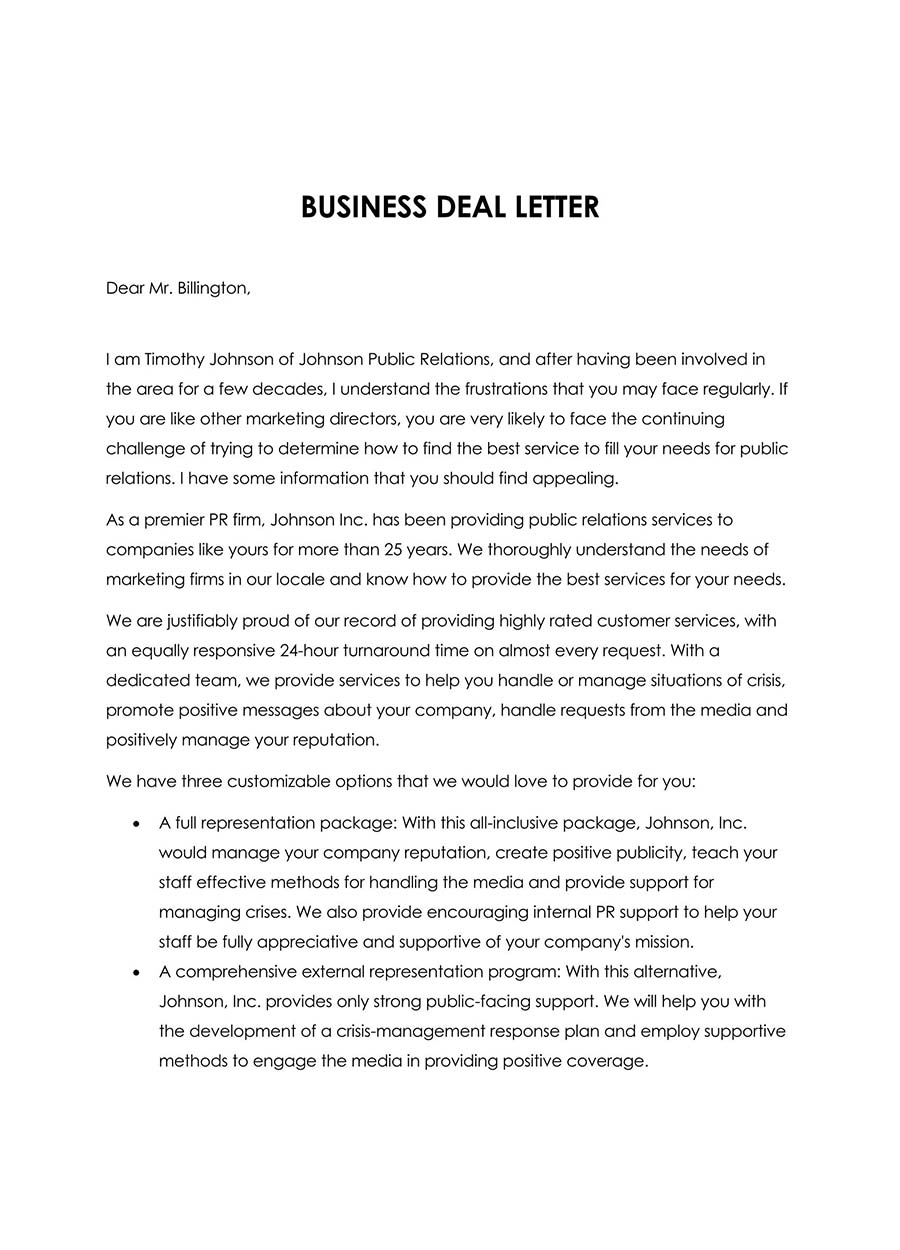
Business Deal Letter
Download: Microsoft Word (.docx)
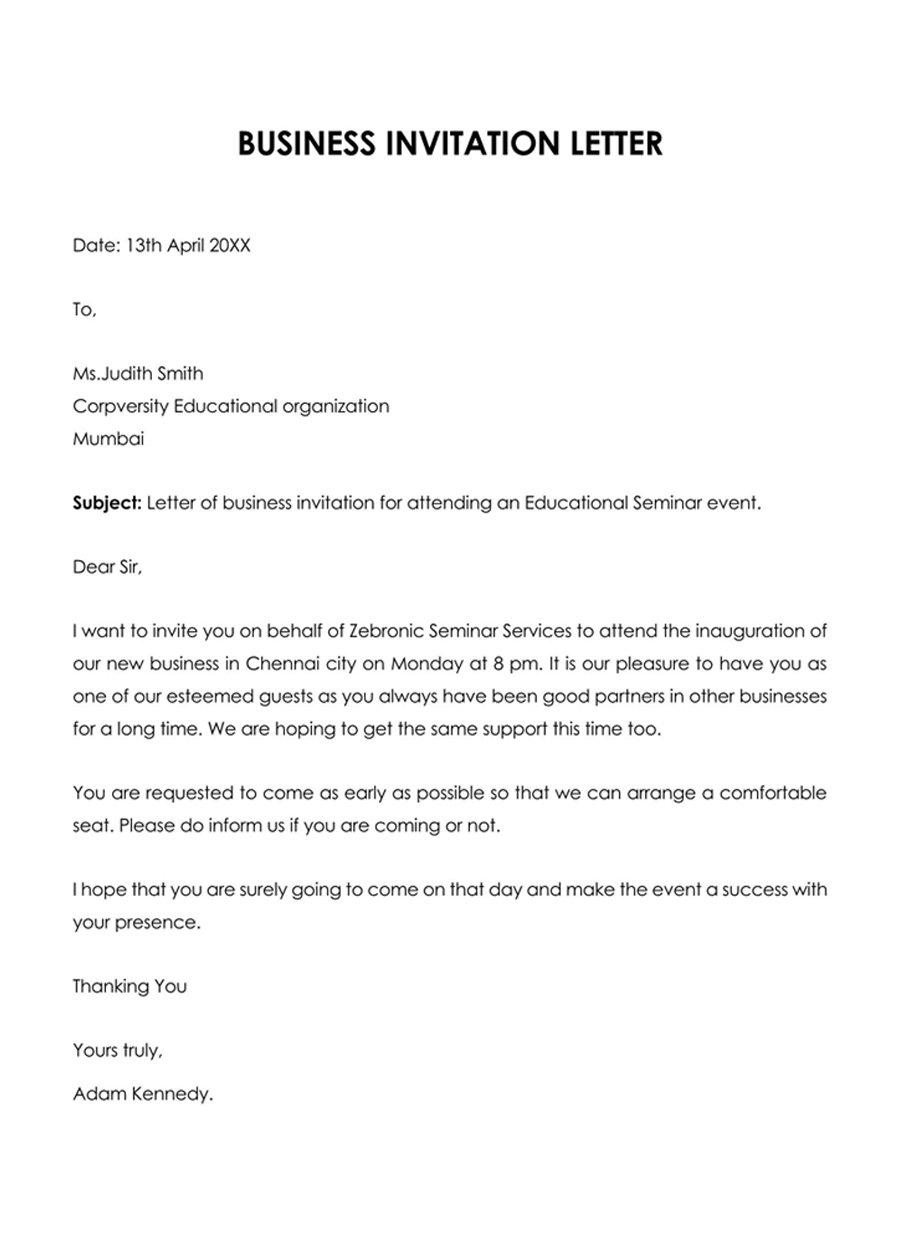
Business invitation Letter
Download: Microsoft Word (.docx)
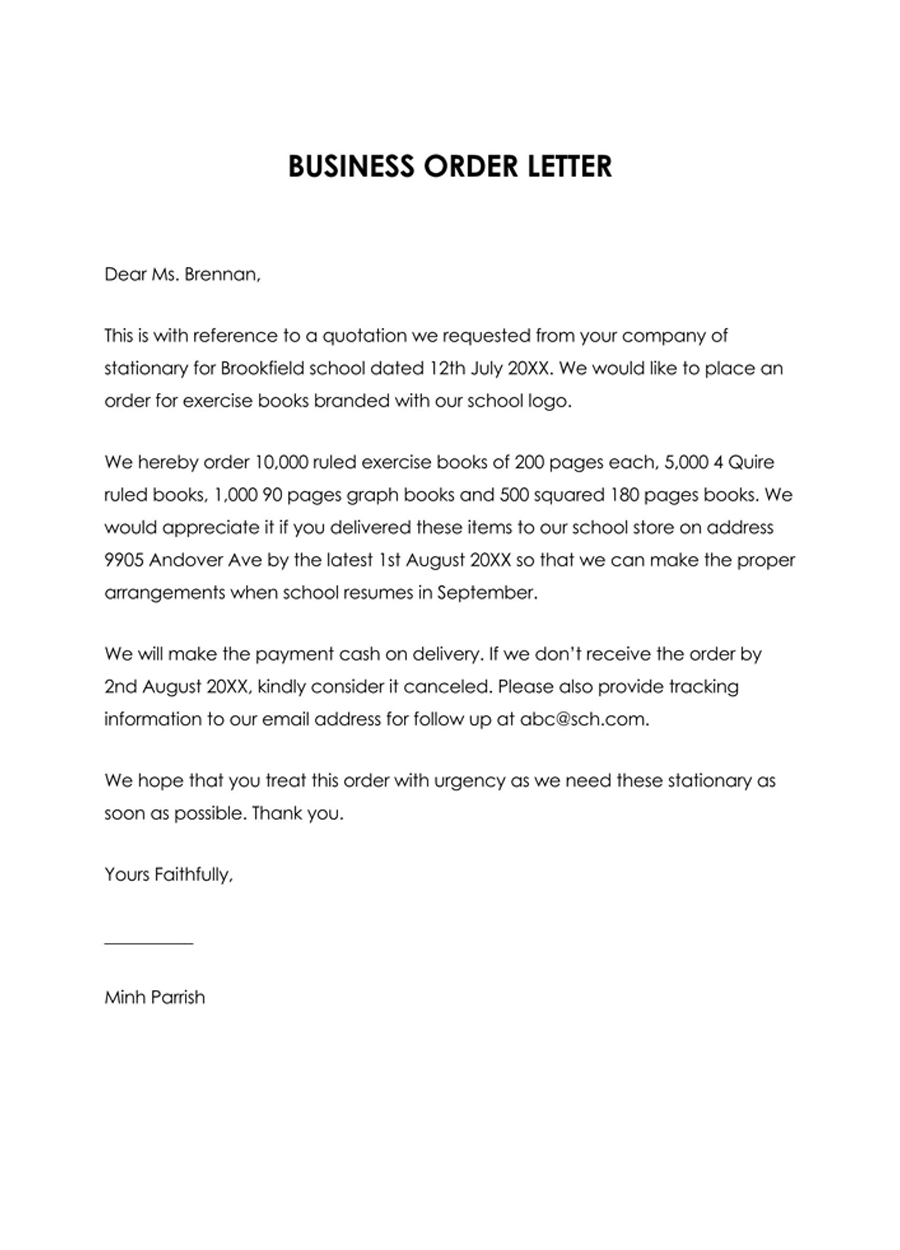
Order letter
Download: Microsoft Word (.docx)
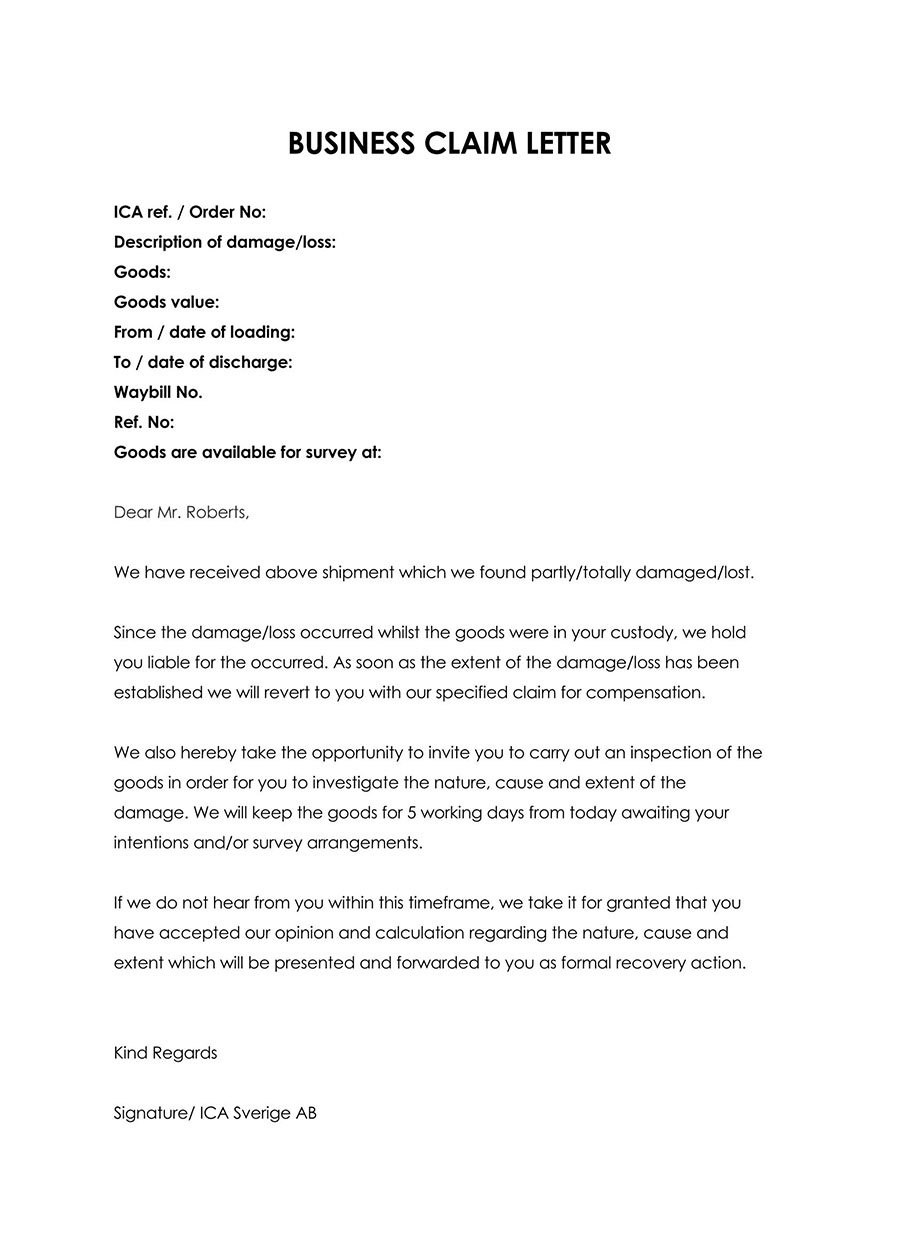
Claim Letter
Download: Microsoft Word (.docx)
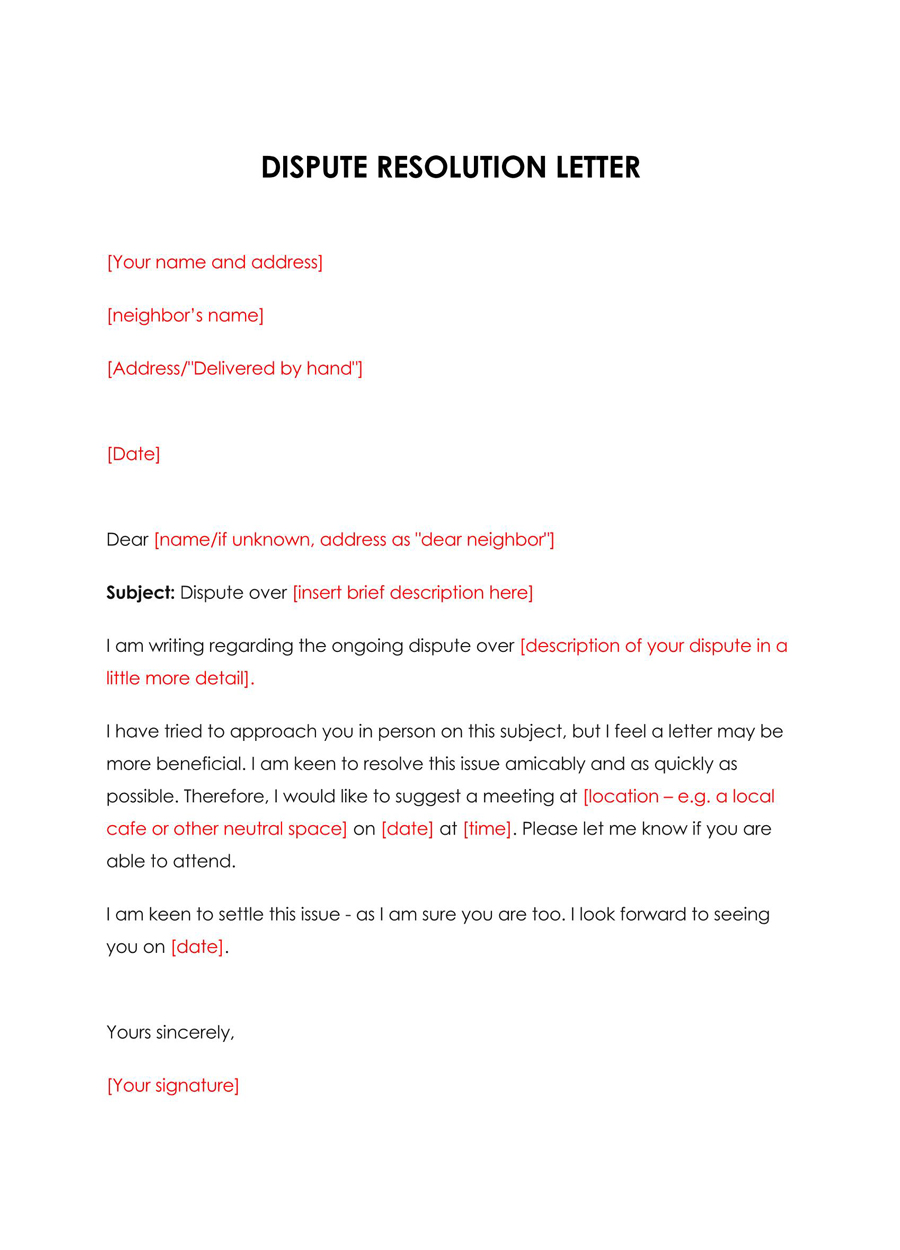
Dispute Settlement Letter
Download: Microsoft Word (.docx)
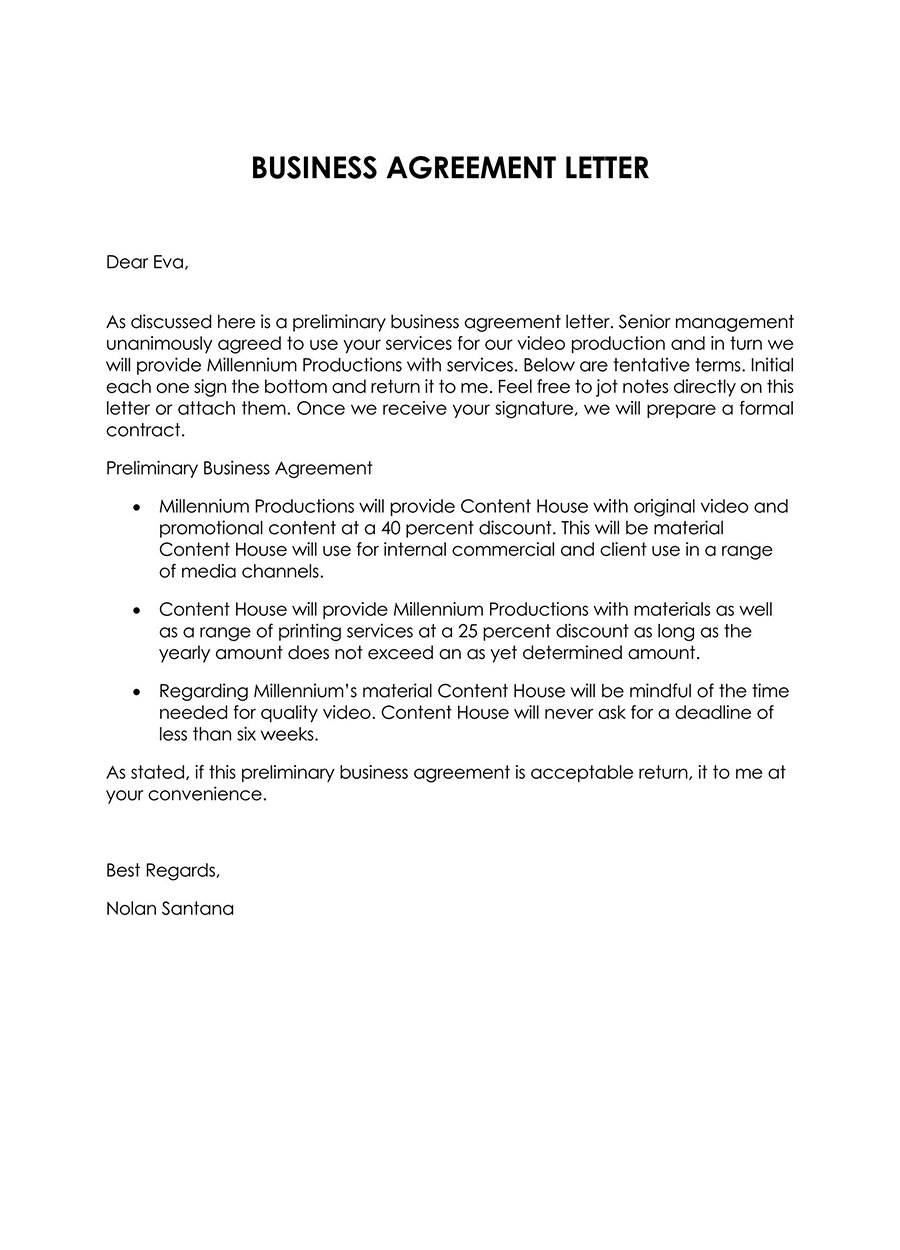
Business Agreement Letter
Download: Microsoft Word (.docx)
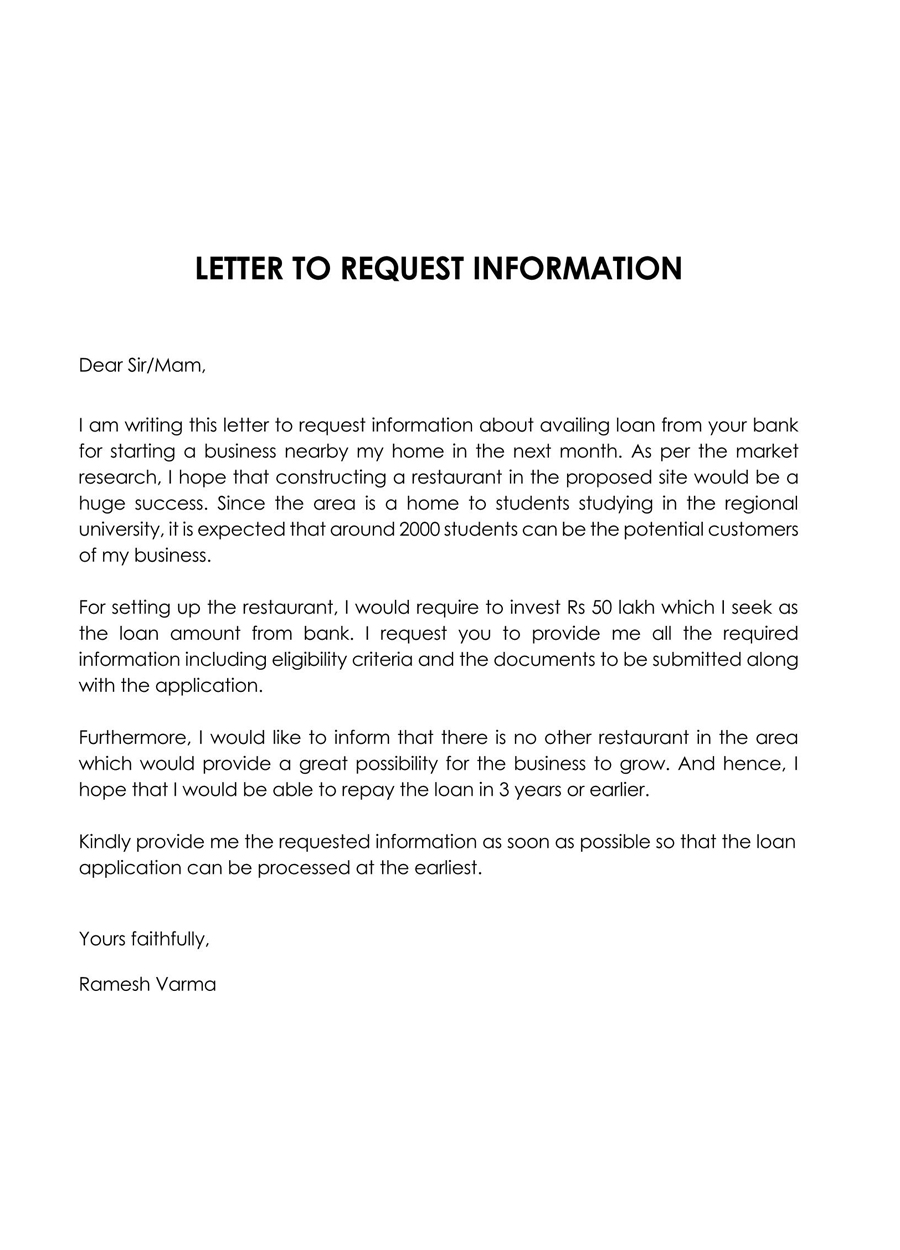
Letter to Request Information
Download: Microsoft Word (.docx)
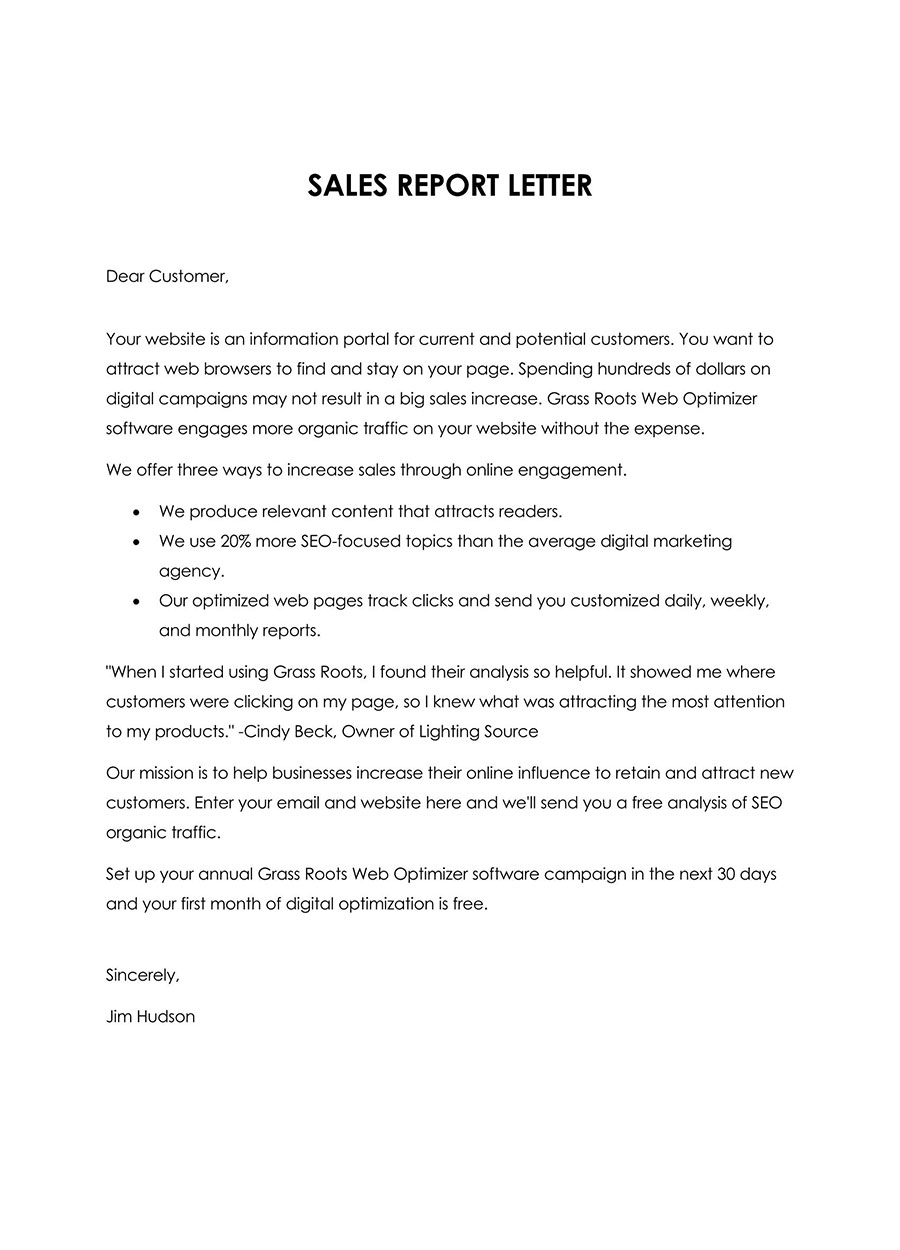
Sales Report
Download: Microsoft Word (.docx)
Formal Letter Styles
There are four main styles of writing a formal business letter:
Full-block style
When using this type of letter style, you either want to make a complaint or inform the recipient about a recent event. This style is usually used when someone wants to communicate with a company and vice versa. The process of using this style is relatively simple; you need to adjust all the text to align to the left margin while you skip a line between each section that you write.
Furthermore, the paragraphs are not indented and are separated by double or triple space. When using this style, writing the addresses requires adding punctuation. The salutation is followed by a comma, but writers in the United States prefer a colon. Finally, the comma comes in after the closing.
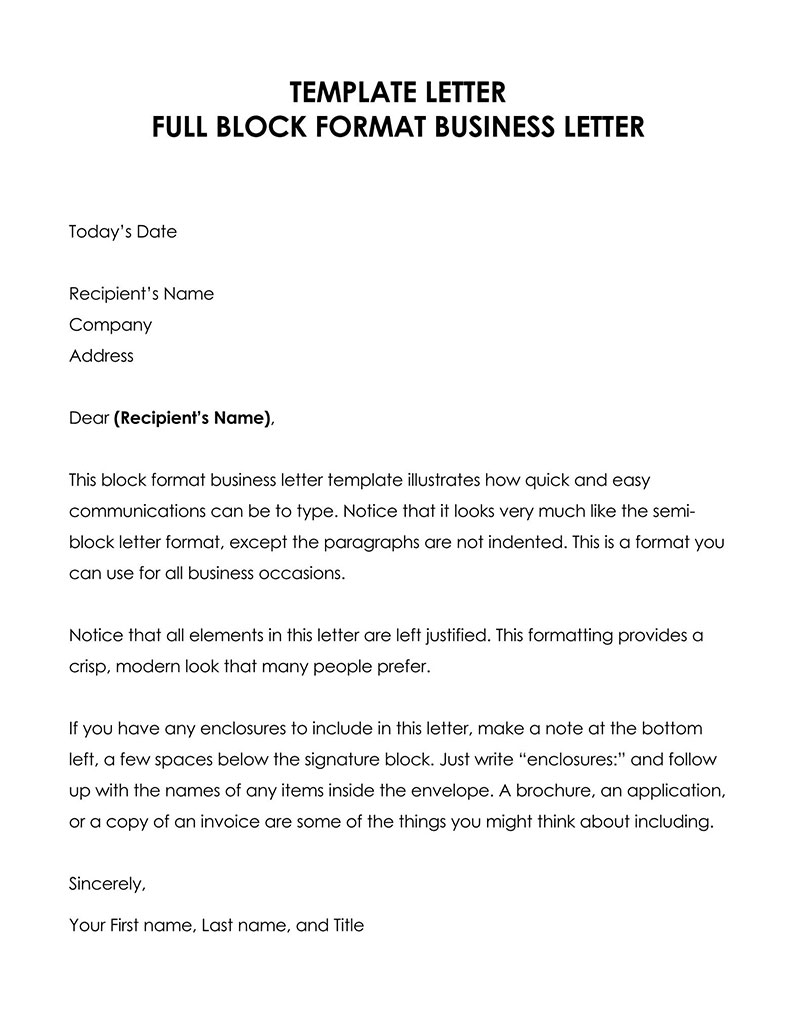
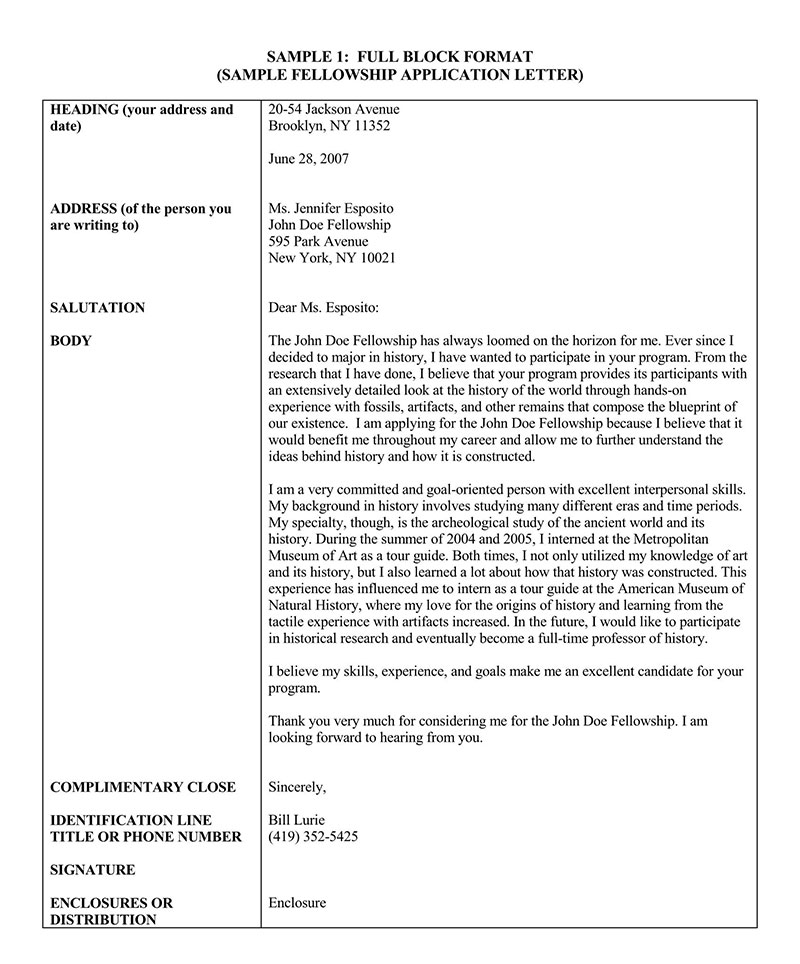
Semi-block style
However, this resembles the full block style and is like the modified block style, but when using this style, you will have to indent the paragraphs. Furthermore, the paragraphs have to be aligned to the left margin.
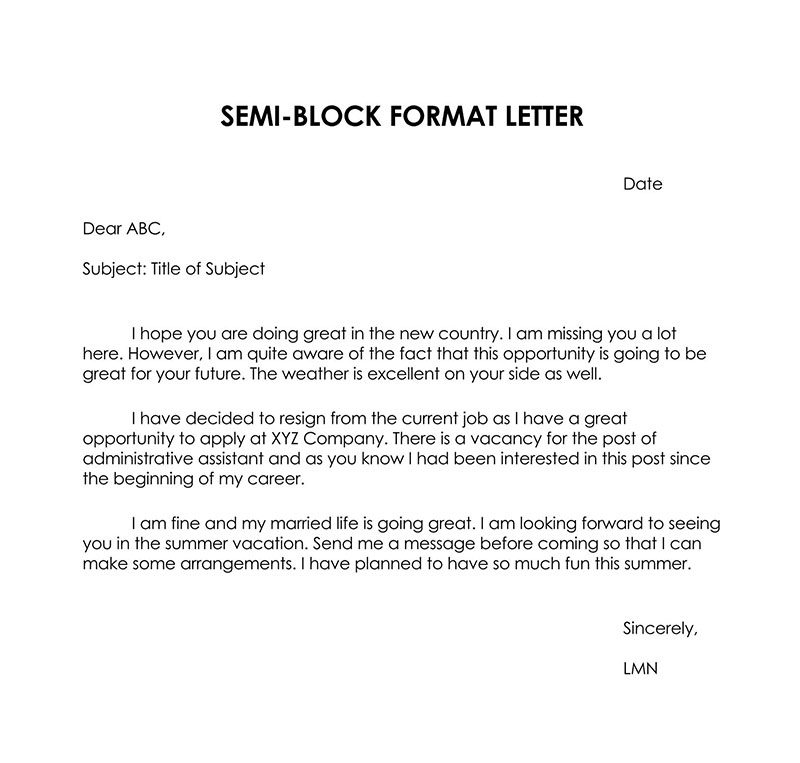
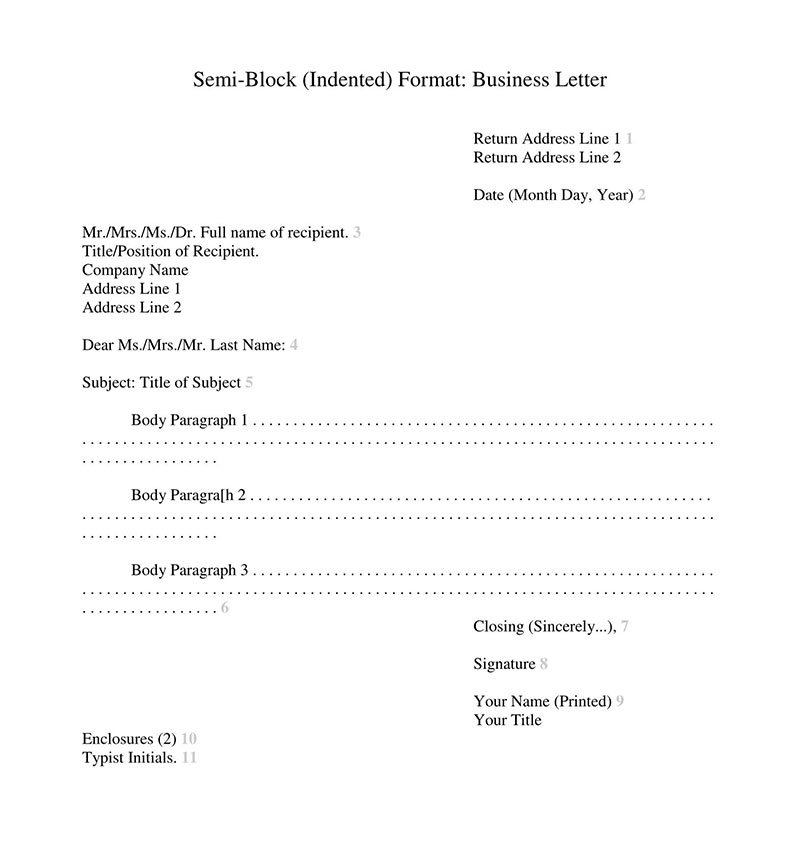
Modified block style
The style of writing formal letters you see in thank you letters and cover letters is the modified block one. This style is also common in resignation letters and is implemented in email and print correspondences. The text is also aligned to the left margin like the previous two styles discussed; however, there is a distinct variation.
For the modified block style, the author’s address, date, and closing are all on the right side, and there is no indentation of the paragraphs. However, when indented, the author’s address, date, and closing are all in the same position.
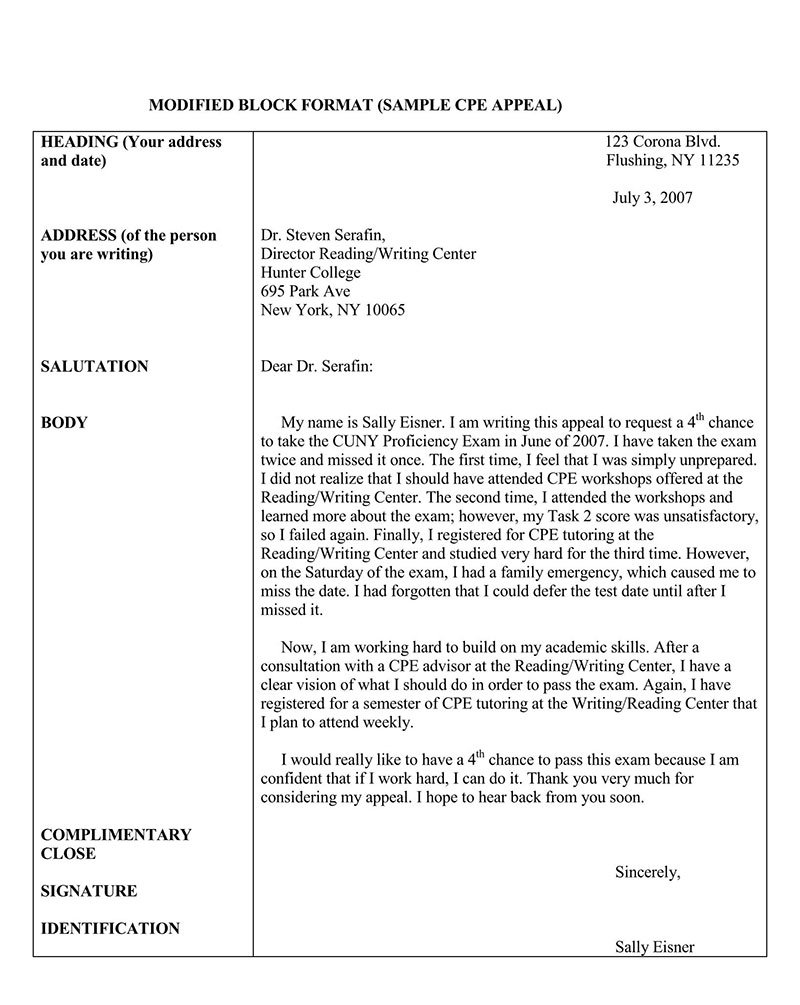
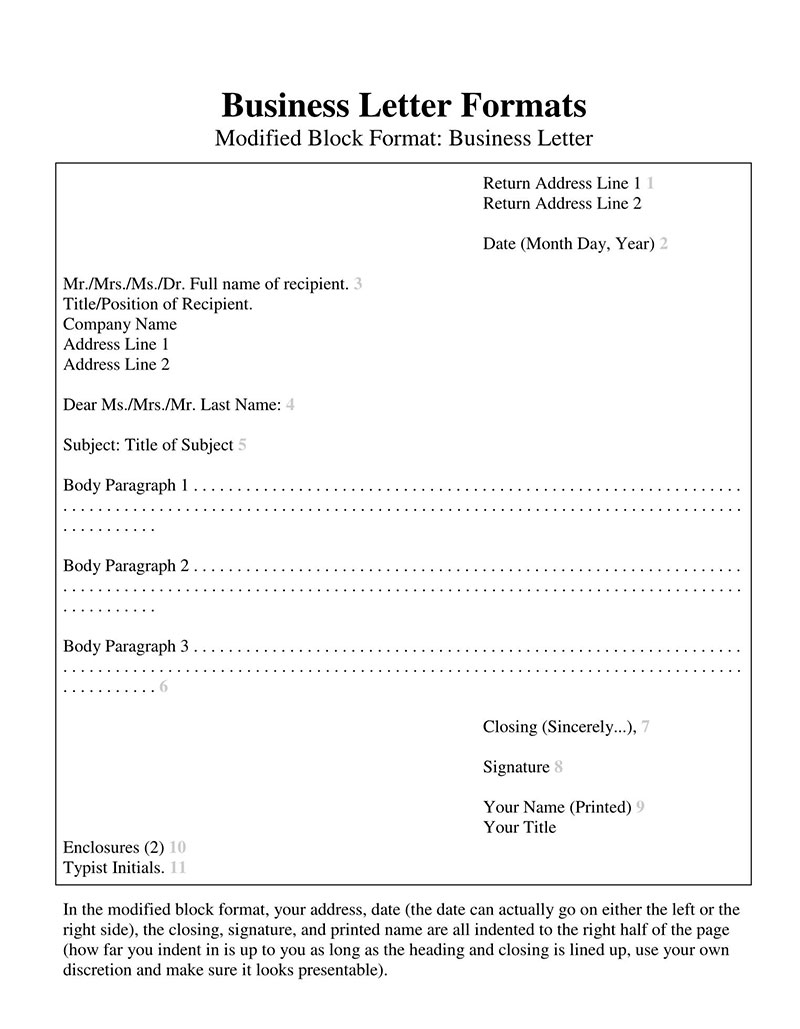
Modified semi-block style
The modified semi-block style has the same elements as the one before it, except that you indent the paragraphs in this writing style. The author’s address, date, and closing are away from the left margin and are all in the same position on the right side of the page.
How to Format a Business Letter
As we mentioned, this letter has guidelines to follow to achieve its purpose. Therefore, the following elements are required to achieve a business letter format:
Letterhead
Anytime a company wants to send internal correspondence like memos, promotion letters, and others, the letter will carry that company’s letterhead. This part of the paper contains the company logo, contact information, and the company’s name. Most reputable companies have this on their letters. More importantly, a letterhead shows the company’s reputation, especially when communicating with another company.
Your contact information
If you write a formal letter, your contact information must be presented as an individual or a company. Your name, address, city and state zip codes, phone number, and email address must be in the letter. This will help the recipient respond to the information that has been detailed in the letter.
Date
In writing the date, you must consider the recipient’s nationality.
EXAMPLE
Americans prefer seeing the month, date, and year when you write the date. But for a U.K. audience, the date comes before the month, like November 11, 2021.
Regardless of the audience you are writing to; it would be best to always spell the month in full, as no abbreviations are permitted.
Recipient’s details
The recipient details are the next phase. It is best to address the person personally, except when you don’t know the person’s name. This is more of a psychological orientation.
EXAMPLE
If you address a letter and state, Mr. Johnson, the person will be more upbeat about reading the letter.
However, if you don’t know the person’s name, then put the person’s title in the company, which is the next part of the recipient’s details. The company name would follow, and then the city and zip code. If you have a phone number, then you can add that.
Salutation
This part is what many people take for granted; the salutation is not a plain “Dear Sir/Madam” that people add. Instead, the salutation indicates respect, which can dictate whether or not your letter will be well received. There are different factors to consider when writing the salutation.
First off, you can address the recipient based on how well you know the person. So, you can say, “Dear Jamie.“. However, if it is a matter of official status and you still know the person because it is a formal setting, you can add the title and the person’s last name, like “Dear Mr. Johnson.”
Another factor you need to consider is whether you do not know the person. In this case, “Dear Sir” or “Dear Madam” will suffice. However, if you’re not sure of the person’s gender but the bane, you can put the first and last name, like “Dear Jamie Johnson“. Finally, if you are unsure to whom this letter should be addressed, there may be confusing titles, but you don’t want to pick the wrong one. Therefore, you can go for “To Whom It May Concern“.
Body
Many people find it hard to start the body of the letter, which contains the entirety of why you are writing the letter. However, if you are unsure how to start, you can start by stating why you are writing a letter,
“I am writing this letter to inform you…”
The body is the main idea of the letter, and it should normally be 3-4 paragraphs to properly explain the essence of the letter.
As we have stated above, the first paragraph should be an introduction to why you are writing this letter.
The second paragraph will be the arguments related to why you are writing the letter. So, for example, if you are writing a letter to solicit funds from a company, the second paragraph should start with what you intend to use the funds for—explaining what the company understands to gain from giving you the funds.
The third paragraph will be for another point if you have any other. But if you don’t, you can stop at the second paragraph and move to the last one, which you will conclude by summarizing your arguments and thanking the recipient of the letter.
Closing
This is where you will tell the recipient the best way to reach you regarding everything you have explained in your letter. You can add your email address or phone number for them to contact you.
EXAMPLE
You can use this
“In case you have any questions, kindly contact me via the email address or phone number; both are attached below.”
Complimentary closing
This is the closing that reflects how well you know the recipient; for the formal letters, you can use either
EXAMPLE
“Yours Sincerely, Yours Truly, Yours Respectfully.”
But for an informal one, you can use
EXAMPLE
“Regards, Best Regards, Best or Thanks.”.
Signature
After the complimentary closing, you should leave at least four lines so that the space can accommodate your signature. The format for signing the letter is your signature, full name, and title.
Enclosures
This may not be included every time, but if you are looking for a partnership or trying to sell an idea to another company, it is best to attach some brochures, flyers, and other important documents to the recipient. Hence, enclosures refer to the additional materials that the recipient can look at in understanding your letter.
For emails, you can simply say,
EXAMPLE
“Kindly find the attachment below.”
Letter Template
TEMPLATE
[Your Name]
[Your Position/Title]
[Company Name]
[Company Address]
[City, State, Zip Code]
[Your Email Address]
[Your Phone Number]
[Date]
[Recipient’s Name]
[Recipient’s Position/Title]
[Company Name]
[Company Address]
[City, State, Zip Code]
Dear [Recipient’s Name],
I am writing to follow up on our recent discussion regarding [topic of discussion]. During our meeting on [date], we had the opportunity to [briefly summarize the discussion or meeting outcome].
I would like to take this opportunity to [reiterate key points or concerns discussed during the meeting, provide updates, or propose further action]. Additionally, I am open to any feedback or suggestions you may have regarding [topic of discussion].
Furthermore, I would like to discuss the possibility of [proposing a specific action or solution, if applicable]. This initiative could potentially [briefly explain the benefits or expected outcomes].
I believe that by [action or solution proposed], we can [potential positive impact or outcome]. I am eager to hear your thoughts on this matter and to collaborate further to achieve our mutual goals.
Please feel free to reach out to me at [Your Phone Number] or [Your Email Address] to discuss this matter in more detail or to schedule a follow-up meeting.
Thank you for your attention to this matter, and I look forward to hearing from you soon.
Sincerely,
[Your Name]
Sample Business Letter
SAMPLE
Dear Dr. Green,
I hope this letter finds you well. On behalf of TechCon Solutions, I am delighted to extend an invitation to you to serve as the keynote speaker at our upcoming Tech Innovation Summit.
The Tech Innovation Summit is scheduled to take place on June 15th, 20XX, at the Grand Tech Center in Cityville and will focus on the future of technology and innovation in various industries. As one of the leading experts in sustainable technology and innovation, we believe that your insights and expertise would greatly enrich our conference and provide valuable perspectives to our attendees.
We envision your keynote address to be approximately 45 minutes long and to cover topics such as “Sustainable Solutions for a Greener Future” and “Innovative Technologies Driving Environmental Conservation”. Your presentation would be followed by a Q&A session, allowing attendees to engage with you directly and delve deeper into the subject matter.
In addition to delivering the keynote address, we would also like to offer you the opportunity to participate in a panel discussion or lead a workshop, if you are interested.
We are prepared to offer an honorarium of $5,000 for your participation as the keynote speaker, as well as covering all travel and accommodation expenses.
Please find attached a detailed overview of the conference, including the agenda, a list of confirmed speakers, and information about TechCon Solutions.
We believe that your presence at the Tech Innovation Summit would greatly contribute to the success of the event and provide immense value to our attendees. We sincerely hope that you will consider our invitation and honor us with your presence.
If you have any questions or require further information, please do not hesitate to contact me at (555) 123-4567 or john.smith@example.com.
Thank you for considering our invitation. We look forward to your favorable response.
Warm regards,
John Smith
Event Organizer
TechCon Solutions
Professional Tips to Ponder
We already discussed some guidelines for the letter. Now, we would like to share some tips that have helped people get the desired results from their correspondence:
Be concise
Many companies receive emails and letters daily; therefore, it is important to be simple and go straight to the point without ambiguity. Plus, the employer or the recipient does not have to spend all day trying to decode everything in your letter. So, go straight to the point.
Keep the tone right
When using a template, you must ensure that your tone remains official; otherwise, it defeats the purpose. Hence, understand why you are writing and set a time that supports your argument or points.
Plus, you need to sound like yourself; do not be monotonous, but let it feel like a human being who wrote the letter. Let the letter flow naturally, like a conversation but also be professional at the same time.
Use formal language
Do not use abbreviations or slang, even if you know the person personally. A formal letter requires the use of formal language that anyone can read. It is also best to use the active voice when writing the letter
EXAMPLE
“I am writing this letter to inform you…”
“This letter is written to inform you…”
Proofread
Be sure to check through your writing to ensure that it is free from errors. Proofreading your work ensures some professionalism. Furthermore, ensure that you spell the recipient’s name correctly to avoid throwing your letter away.
Choose a professional font size and style
It is best to use a font size and style that are generally acceptable. The use of Times New Roman and Arial is some of the most popular. It will aid their readability when they can easily see your font.
Ensure that readability is your drive to pick a font, not its fanciful nature. Therefore, there are some fonts that you can consider readable, such as Calibri, Corbel, Gill Sans, Helvetica, Open Sans, and Roboto. These are some of the most acceptable fonts.
Include sections for all necessary information
The layout of your letter has to include sections that carry all the necessary information. You need to be able to properly communicate from the first line of your letter to the last. Therefore, the proper layout with the appropriate sections will ensure the recipient is engaged till the end.
Pay attention to spacing and margins
Business letters need to be properly spaced for easy readability and professionalism. Therefore, in the contact information and salutation, you need to properly space those elements to ensure that the recipient can see them.
In the first paragraph, let there be adequate space between the contact information and recipient details. Finally, most give a one-inch margin to ensure recipients do not have problems seeing every bit of detail.
Choose a high-quality paper
This is when you need to send a physical letter to a company for an individual. You need to use quality paper that cannot easily get torn and place the letter carefully in an envelope. This shows that you are a professional and value the recipient.
Final Thoughts
Formal business letters are essential in discussing important matters outside and within an organization. Without understanding how to structure the letter, you may not get good value from an organization. Therefore, this article seeks to put you in a better position to present your ideas to any company in whatever manner you need to discuss them. The templates provided are to ensure that your letter stands out.



